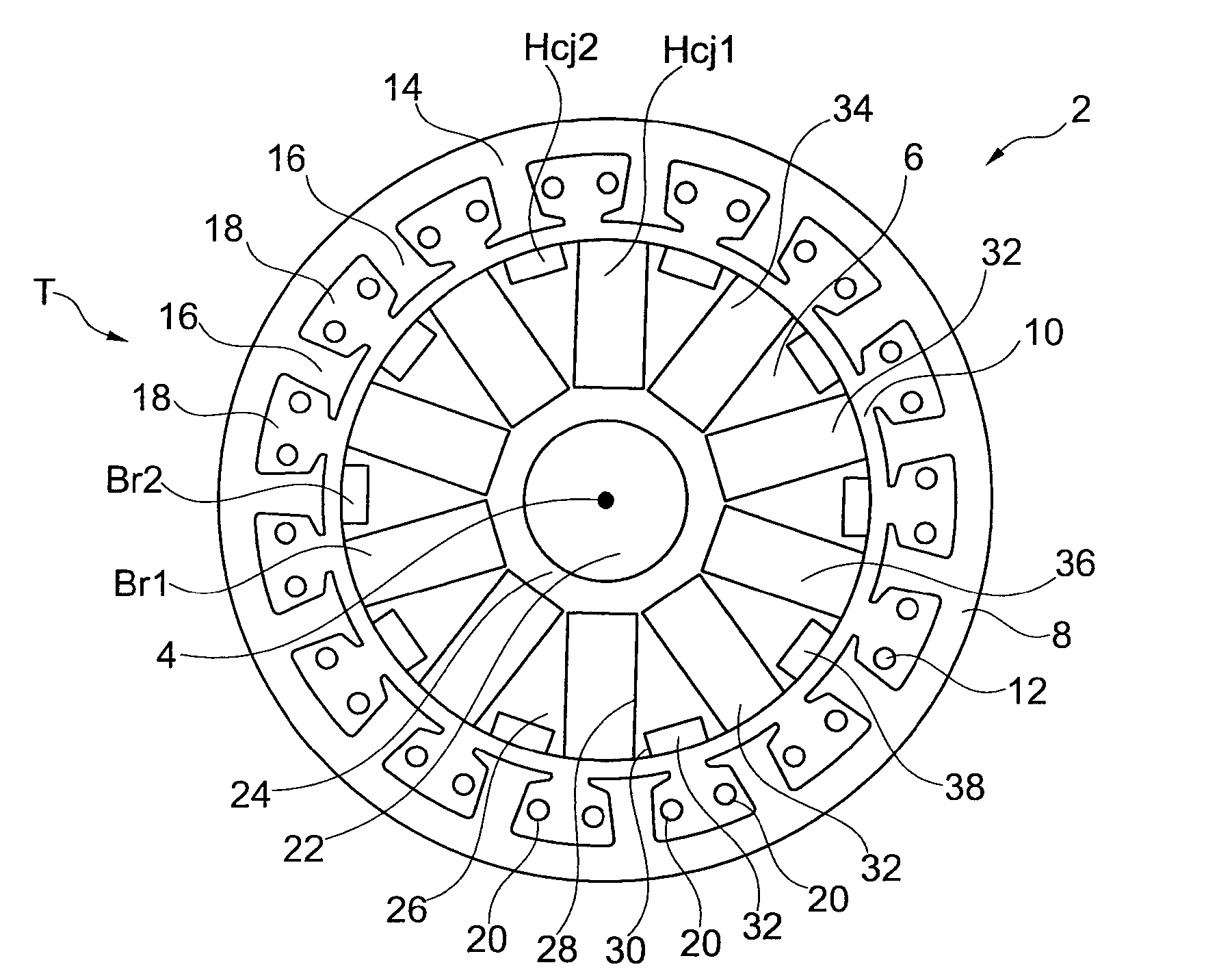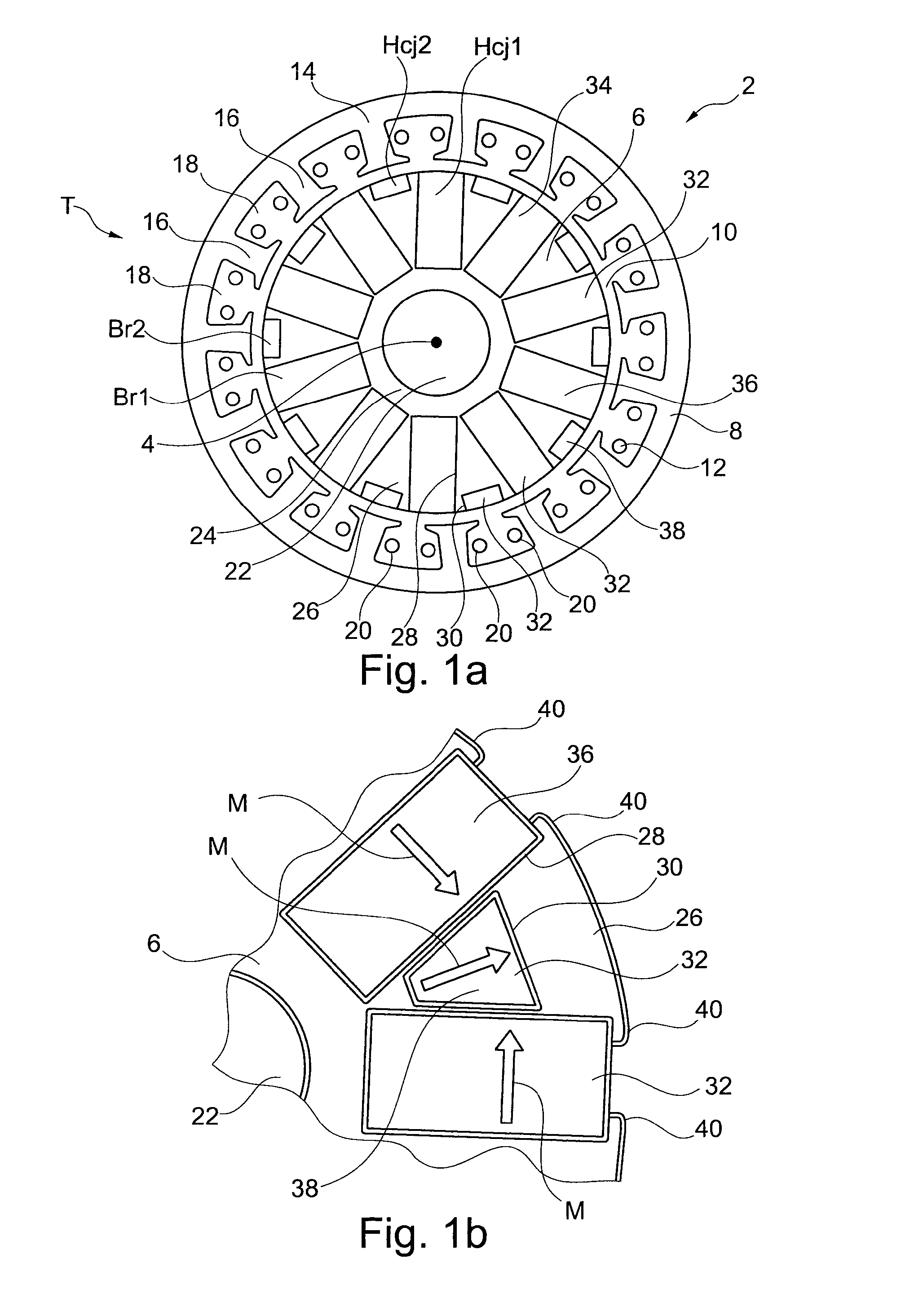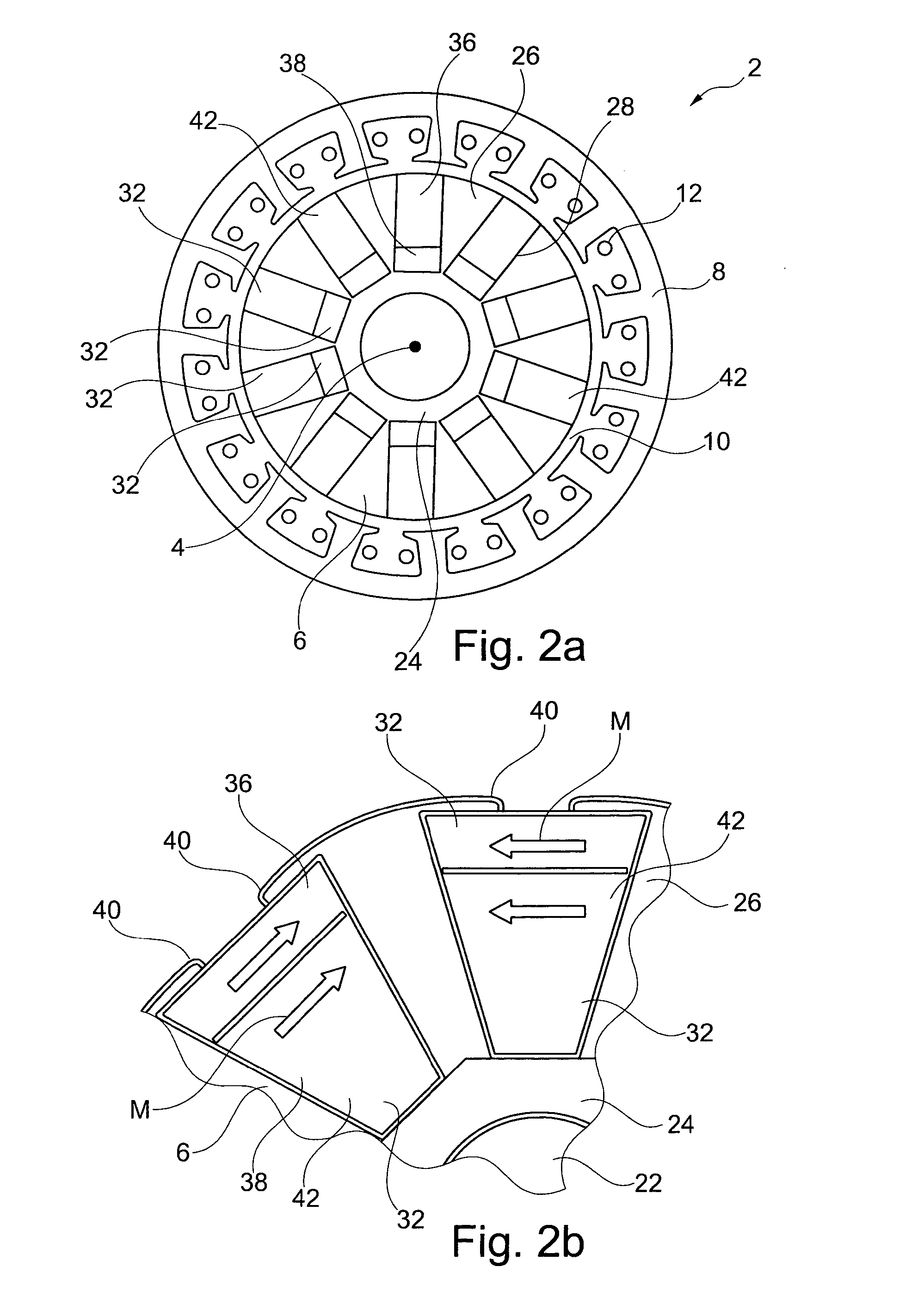Electrical machine
a technology of electric motors and electric motors, applied in the direction of magnetic circuits characterised by magnetic materials, magnetic circuit shapes/forms/construction, magnetic circuit rotating parts, etc., can solve the problems of increasing cost-intensive so-called rare earth elements (hree), such as terbium and particularly dysprosium, and achieve high demagnetization resistance, low price, and production special
- Summary
- Abstract
- Description
- Claims
- Application Information
AI Technical Summary
Benefits of technology
Problems solved by technology
Method used
Image
Examples
first embodiment
[0047]an electrical machine 2, designed as a synchronous machine and used as an electric motor, is shown in FIG. 1a. Electrical machine 2 is shown here in a sectional illustration perpendicular to an axis of rotation 4 of a rotor 6, which is surrounded by a stator 8, an air gap 10 being formed between these. Stator 8 comprises an electromagnet structure 12 with a soft-magnetic stator lamination stack 14, which has 15 teeth 16, each of which is separated by a slot 18 running parallel to axis of rotation 4. A coil 20, which is disposed in two adjacent slots 18, is looped around each tooth 16. Coils 20 are made of an enameled wire and are energized by means of electronics (not shown). Electric motor 2 therefore is brushless.
[0048]Rotor 6 has a shaft 22, which is enclosed by a substantially nonmagnetic core 24 with a regular decagon as a cross section. Core 24 is surrounded form-fittingly by a soft-magnetic lamination stack 26, which as a result has a relatively low magnetic coercive fi...
sixth embodiment
[0063]FIG. 3b shows a modified form. Hybrid magnets 42 are designed shown in FIG. 2c and second pockets 30 according to second pockets 30 shown in FIG. 1b. In this case, permanent magnets 32 of third set 44 are again arranged form-fittingly in second pockets 30 and radially magnetized. The third remanence Br3 is the largest of the three remanences Br2, Bra and the third magnetic coercive field strength Hcj3 the smallest of the three magnetic coercive field strengths Hcj1, Hcj2, Hcj3.
seventh embodiment
[0064]An alternative of rotor 6, which is free of heavy rare earth elements, is shown in FIG. 3c. The radial thickness of all permanent magnets 32 is substantially the same. The cross section of permanent magnets 32 of first set 36 is rectangular and that of second set 38 trapezoidal, so that the shape of the formed hybrid magnets 42 corresponds substantially to FIG. 2c with different thicknesses. Permanent magnets 32 of third set 44, whose magnetization direction M runs substantially radially, are positioned between permanent magnets 32 of second set 38. In this case, the cross section of permanent magnets 32 of third set 44 is also trapezoidal, whereby the cross section narrows with increasing distance to axis of rotation 4. The flanks of permanent magnets 32 of the second and third set 38, 44 thus do not run radially. All permanent magnets 32, which are in direct mechanical contact with their respective adjacent permanent magnets 32, are surrounded radially outward by lamination ...
PUM
 Login to View More
Login to View More Abstract
Description
Claims
Application Information
 Login to View More
Login to View More - R&D
- Intellectual Property
- Life Sciences
- Materials
- Tech Scout
- Unparalleled Data Quality
- Higher Quality Content
- 60% Fewer Hallucinations
Browse by: Latest US Patents, China's latest patents, Technical Efficacy Thesaurus, Application Domain, Technology Topic, Popular Technical Reports.
© 2025 PatSnap. All rights reserved.Legal|Privacy policy|Modern Slavery Act Transparency Statement|Sitemap|About US| Contact US: help@patsnap.com



